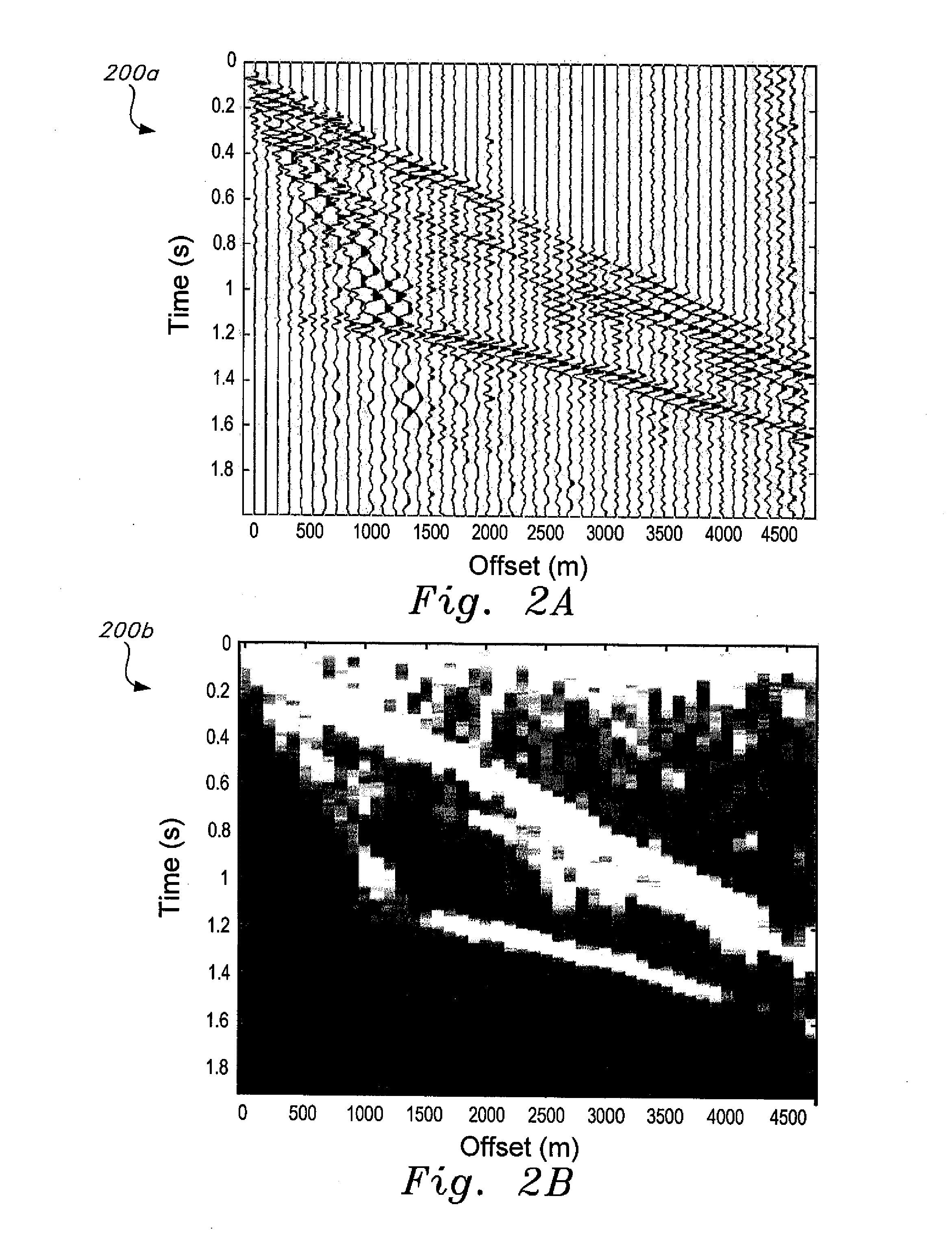Method of first arrival picking of seismic refraction data
a seismic refraction and data technology, applied in the field of seismic data analysis, can solve the problems of increasing the odds of hitting an economically recoverable reservoir, reducing the odds of wasting money and effort on a nonproductive well, and oil and gas are often trapped thousands of feet below the earth's surfa
- Summary
- Abstract
- Description
- Claims
- Application Information
AI Technical Summary
Benefits of technology
Problems solved by technology
Method used
Image
Examples
Embodiment Construction
[0023]The method of first arrival picking of seismic refraction data is embodied in software that uses the τ-p transform on energy ratio seismic records. As shown in FIG. 1, the method 10 first gathers the seismic shots at step 12. At step 14, the energy ratio (ER) is computed according to the relation known in the art as the Coppens' Method:
ERj=∑i=ji=j+LAi2∑i=1i=j+LAi2(1)
where ERj is the energy ratio value associated with the window starting with the jth sample of the trace, and Ai is the signal amplitude of the ith sample of the trace. The energy ratio tends to emphasize the first few samples of the record, which basically consists of noise. This energy ratio peak can be recognized easily by its position at the very top of the trace, and therefore can be neglected. The second energy ratio peak is always associated with the first arrival, which includes direct and critically refracted waves that are of interest to exploration seismology. However, these two peaks can possibly interf...
PUM
 Login to View More
Login to View More Abstract
Description
Claims
Application Information
 Login to View More
Login to View More - R&D
- Intellectual Property
- Life Sciences
- Materials
- Tech Scout
- Unparalleled Data Quality
- Higher Quality Content
- 60% Fewer Hallucinations
Browse by: Latest US Patents, China's latest patents, Technical Efficacy Thesaurus, Application Domain, Technology Topic, Popular Technical Reports.
© 2025 PatSnap. All rights reserved.Legal|Privacy policy|Modern Slavery Act Transparency Statement|Sitemap|About US| Contact US: help@patsnap.com



